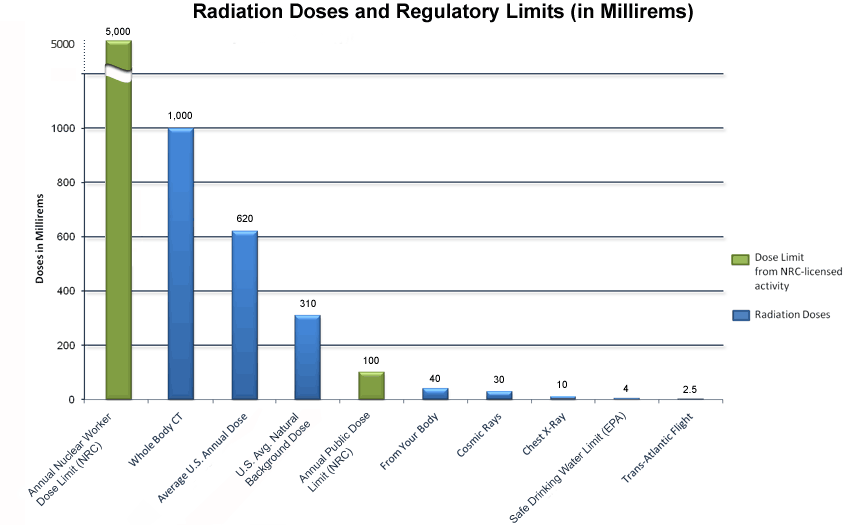There go my swimming on Korea’s east side plans for this year.
I know it might sound odd, but you shouldn’t be afraid to swim in Korea. The water isn’t going to get poisoned or become radioactive, it’s diluted so much that there’s not going to be a measurable difference in water quality. What they are doing is standard procedure, and it’s exactly the way you get rid of such water. It’s safe.
Not only that, water released from Fukushima wouldn’t even go into the Sea of Japan. Fukushima is on the east coast of Japan. Water released from it would be going into the Pacific.
This is such non-news it should be called olds.
Hey, I’m trying to contribute to the World News with some stuff and because I live close by (in Korea) I found it interesting.
Good for you, it’s still pretty much non-news though. This is literally happens every day, that’s all I meant with my bad joke.
I found it interesting. Thanks for posting.
If it makes you feel better, to put things in perspective, the planned discharge of 22TBq per year is actually a lot lower than what other countries with normally operational nuclear power plants are already doing, including Korea.
I’m not an expert in this field either and perhaps there should be a bigger discussion/education to be had if we should all be dumping so much stuff in the ocean, but IMHO if it was deemed safe when Korea discharged 211TBq into the ocean in 2020, this shouldn’t change your mind either.
Every day the Earth receives 50 tons of radioactive material from the Sun, so, can we see this in a global perspective : what are the numbers ?
( sorry if this is a double : server is lagging because of DDOS attack )I’m very rusty here, so please correct me where I’m wrong.
Isn’t most of the radiation that makes it to the earth’s surface from the sun just EM radiation? That acts a lot different than radiation due to nuclear decay. Your use of the unit ‘tons’ makes me think you’re talking about particle radiation, of which the only one that reaches earth’s surface in large quantities would be muons, which may as well be ignored because they aren’t interacting with anything.
The water being released by Japan has the following isotopes:
Isotope Half-Life (years) Tritium (3H) 12 Carbon-14 5,370 Cobalt-60 5.2 Strontium-90 28.8 All four of these isotopes decay via beta decay.
So, a comparison to the Sun seems weird here.
Here’s an IAEA overview as of February 2023,
The discharge of the ALPS treated water into the sea will be conducted after i) purification/re-purification to meet regulatory standards set based on international standards with an exception of tritium and ii) to allay the concerns of the consumers, the target concentration of tritium should be the same as the operational target (less than 1,500 Bq/L, that is less than 1/40 of the regulatory standard value for tritium) by sufficient dilution (more than 100 times) by sea water, prior to the discharge into the sea, and iii) The total annual amount of tritium to be discharged will be at a level below the operational target value for tritium discharge of the Fukushima Daiichi NPS before the accident (22 trillion Bq/year).
So it’s diluted well below internationally accepted concentrations. Moreover, the release is even less than when it was operational!

This is the quality post that I love getting these discussions. Thanks for the info!
That 50 ton per day I recalled from long ago. So I had to make some search, here’s what I found :
- Ground Level Enhancement
These effects are usually measured as elevated levels of neutrons and muons. These events can increase the radiation dose of an individual at sea level or while in an aircraft, though not by enough to significantly increase an individual’s lifetime risk of cancer. …and - “solar wind”
400 km/s x 5 ions/cm3 x 1g/mol x …(6400km)2 x 3.1416 x 1e15cm3/km3
… x 86400s/day x 1/(6.02e23 ions/mol) This is about 37 tons per day, mostly proton and alpha particles.
…
I used the diameter of the earth instead of that of the magnetic field around the Earth, this is simplistic but should give an order of magnitude. I did not find better information and the real value should be found by someone else.
solar wind details inside :
Properties and structure
Velocity and density :
“Near the Earth’s orbit at 1 astronomical unit (AU) the plasma flows at speeds ranging from 250 to 750 km/s (155–404 mi/s) with a density ranging between 3 and 10 particles per cubic centimeter and”…You’re right and I completely forgot about those somehow.
On average, Americans receive a radiation dose of about 0.62 rem (620 millirem) each year. Half of this dose comes from natural background radiation. Most of this background exposure comes from radon in the air, with smaller amounts from cosmic rays and the Earth itself.

So, cosmic rays contribute hardly (about 4%) any to the radiation we receive every day.
I’m no expert here, clearly, so I’m not sure how to compare these units of radiation with the ones being provided for the Fukushima water release; those numbers are provided in becquerel from the sources I found.
@A_A Japan is So Porite, So Crean!
- Ground Level Enhancement
The released water has around 1500 Bq/kg. If you were to drink a cup of that water (not even diluted further), you’d get a dose of 0.375 mSv. That’s like 100 flight hours, or an x-ray (depends). Two months of just sitting at home will get you that dose.
That’s a weird comparison, isn’t the concentration in one place which makes radioactive materials dangerous? (Not saying that the water has enough radioactive material, just saying that comparing it to the sun and the whole world doesn’t make sense).
It’s not weird and does make sense; since the sun’s huge amount of radiation is dispersed around the world, they are asking if so too might this tiny amount of radiation be dispersed around the ocean. (We should not put down someone for asking questions, learning is good!)
But it’s first released in one place where (if it was in dangerous amounts) it would affect the maritime life whereas the sun is distributed from the start.
The concentration at which it is released is already internationally regarded as safe. They aren’t dumping a high concentration that, by nature of distribution in the ocean, will eventually reach a safe concentration. They’re diluting it to safe levels before they even release it. I’m going to copy part of another comment I made in this thread here:
Here’s an IAEA overview as of February 2023,
The discharge of the ALPS treated water into the sea will be conducted after i) purification/re-purification to meet regulatory standards set based on international standards with an exception of tritium and ii) to allay the concerns of the consumers, the target concentration of tritium should be the same as the operational target (less than 1,500 Bq/L, that is less than 1/40 of the regulatory standard value for tritium) by sufficient dilution (more than 100 times) by sea water, prior to the discharge into the sea, and iii) The total annual amount of tritium to be discharged will be at a level below the operational target value for tritium discharge of the Fukushima Daiichi NPS before the accident (22 trillion Bq/year).

This release will represent less ocean irradiation than did the operating Fukushima plant.
It’s also all released in one place from the sun… But since the crux of your point seems to be this:
(if it was in dangerous amounts)
And the answer is “it’s not”, it’s all a bit of a moot point. I just wanted to point out the commenter you said wasn’t making sense was indeed making sense since your comment seemed pretty hostile.
As every other nuclear power plant located at the coast does and nobody cares. AFAIK the water from Fukushima is “cleaner” than from other sites.
What’s more, it’s cleaner than when Fukushima was operational!
The total annual amount of tritium to be discharged will be at a level below the operational target value for tritium discharge of the Fukushima Daiichi NPS before the accident
Strangely hostile comments on this post
Probably a reaction to the enormous over-reaction that people have been having about nuclear power for decades. People hear the word “radioactive” and freak out like it’s some kind of evil spirit. It gets quite frustrating and tiring.
Fukushima in particular seems to be a touchstone for nuclear paranoia. 18,000 people died in that tsunami and zero of them were caused by the reactor meltdown, but there was a parade of news articles about how the Pacific Ocean was going to become some sort of septic dead zone and the entire coast would have to be evacuated. I recall one breathless prediction of the literal end of humanity. I really want to never hear of it again unless something actually significant happens.
I absolutely agree that there was a massive overreaction from it.
That said, there was also a ton of face-saving on Japan’s side as well that manifested in a lot of misinformation coming from them. Essentially, there was a distinct lack of transparency about the scope of the problem, so neighboring countries were justifiably unhappy with how Japan handled things.
Yeaaaahh, I didn’t mean to upset OP with my bad pun but I think I did. Sometimes humor is no pun!
No worries I didn’t think of it as hostile, actually I thought the parent meant that my comments were hostile, because further down someone mentioned that my comment was hostile.
Haha you are both good. I was just surprised










